New Orleans and The DISTILLERY
Creative Visibility
The Intersection
Mid June, I witnessed a remarkable convergence at the Contemporary Arts Center, New Orleans (CAC). While the powerful and nationally touring 30 Americans exhibit was taken down—an exhibit that meant a great deal within our city—over twenty local artists performing in projects within the creative residency The DISTILLERY utilized the Contemporary Arts Center for their own creative needs. The selected DISTILLERY fellows: a musician, a choreographer, a poet, and one raucous drag queen, maneuvered around the CAC’s visual art, exploring their work in the board room, dance studio, and the blackbox theatre. I watched from the CAC’s coffee shop where a few other local artists poked their heads over their laptops and took notice: the big institution opening its doors to the local performance community by bringing in out-of-town work and supporting developing local work. It was an electric, magical sight.
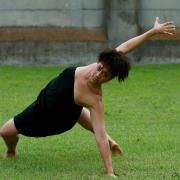
Photo by Emilie Whelan.
Which took more than magic to make happen: three years of pitching, prompting, transitions, and compromise produced what is our first creative residency for local performing artists within our strongest interdisciplinary arts center in New Orleans. What is fairly magical is how a program dedicated to the artistic needs of its local artists, placed in a local institution with national extension can multiply the ecosystem of a performance community in wide-reaching, long game ways. Bold and spry, this is what The DISTILLERY is aiming for; we are only on our third month.
To Begin at the Local Beginning
Let me step back, because as with all bootstrap programs pulled up from smaller cities, The DISTILLERY was developed from a hunger that has no choice but to go hunting. Two years ago, during the Network of Ensemble Theaters’ Microfest conference in New Orleans, ten local artists and organizers were asked to write a blog for HowlRound on the current performance climate in New Orleans. As the performance coordinator for the New Orleans Fringe, an actor, and director, I expressed the “fast and furious” energy of a new generation of theatremakers. I wrote that everywhere I turned, there were creative folks “meeting”—in a bar, at a snowball stand, at a bike rack—wherever the meeting, our community’s metabolism was running on a rich diet of meeting, converging, producing, and putting collaborative performance up on its feet within months. Exceptionally interdisciplinary and ensemble driven, it was a poor man’s theatrical expression of respect and urgency. Lisa D’Amour, a native New Orleanian, who continues to make vibrant work within her home city, responded back to the article with a comment along the lines of: But what happens when we hit our resource ceiling? Where does the furious youthful energy, the work, and all those meetings go from there?
Connecting experimental drama, drag, the claimed ancestry of the French symbolists, Pride week in Boston’s South End: none of this was coincidental or exploitative marketing on Meehan’s part. Her decisions were principled and formal—truly based on a wrestle with ideas, and not cosmetically celebratory.
It was a good question. In a land of rambunctious radical peers, but little state and city funding, our local artists could be left to ask: “Do I have to leave my home for my work to further develop?”
As a Southern city, New Orleans’ response is a battle cry rooted in regionalism and pride: No. Other options must be made available for local performances to mature. As national performance dialogues yearn to hear more of the narratives, reflections, and refractions of the unique parts of our country, so we must create bold ways for local artists to swim deep into their work right at home in the very own bathtub that first bathed them, if indeed that place is the heartbeat of their work.
In 2011, conversations within New Orleans’ younger theatremakers were brewing in post-show discussions, grant panels, and the local bars. What do we really need as performance artists in order to develop work within our home cities? Let’s say that we have announced ourselves within our communities. We’ve done a few compelling shows that speak to our investigations, and partnered with a few remarkable artists within our cities, and now we are ready for the next intentional step: time, space, and inspiration to delve deep into that passion project. What are we really asking for?
The Five Major Food Groups of an Early/Mid-Career Local Artist
1) A safe, consistent, free rehearsal space
2) A safe, consistent, free space to meet with peer collaborators and mentors
3) A safe, consistent free space to show the work
4) Intentional material resources (lights, projectors, chairs…)
5) Intentional people resources (artists outside of their already existing creative and organizational network).
In 2011, I attended the number 3 in the five major food groups. I visited the Live Arts Brewery (LAB) in Philadelphia, a creative residency for theatremakers hosted by the Philadelphia Live Arts Festival and Philly Fringe. I witnessed the space, absorbed the quality and health of the artists, and within the year, the grassroots-driven New Orleans Fringe invited Craig Peterson, the founding artistic director of the LAB to New Orleans to speak about how a program can respond to these five needs in an intentional, sustainable program within a community’s ecosystem.
The LAB was bold: a ten-month residency with unlimited rehearsal space, an ample material budget and honorarium for each participating artist, and many mid-career, mentoring artists visiting rehearsal rooms and offering feedback.
The morning Peterson spoke about his program, companies that have been the foundation of our performance community such as Junebug Productions, Artspot, and Southern Rep Theater, sat beside new generation artists, including Goat in Road Productions and NOLA Project. Leaders from New Orleans Museum of Art and the Contemporary Arts Center, and representatives of our funding organizations such as Jazz and Heritage Foundation all joined to hear what a creative residency could be. It was a day that left us all buzzing. How could this be possible in New Orleans?
Informally, a few local artists continued the conversation after Peterson’s departure. If these five basic food groups for performing artists are essential, and if regionalism means anything to New Orleans, some folks are going to have to step up to the plate and give a creative residency a try with the resources we have.
The DISTILLERY
In its inaugural year, The DISTILLERY is a creative residency for mid-career New Orleans-based performing artists to utilize while they are crafting a new performance. In addition to the basic food groups, The DISTILLERY values local and national mentorship, consistent roundtable critical discussions amongst its four participating fellows, documentation of artistic processes, and audience engagement.
In February of this year, we sounded a call for artists to participate in a program that would provide this basic and critical support and a nominal materials budget and stipend for the artist. We expected thirty applications. We received nearly sixty: theatre artists, musicians, film makers, poets, choreographers, and trapeze artists (!) Artists we thought to approach as mentors—the elders of artistic wisdom and talent in our community—applied themselves with passion to projects they had been sitting on for years. One sent his in with a note: “Thank you. It’s been time for this.”
Where that Institution Comes In
It is no small attraction that this creative residency is housed at the Contemporary Arts Center, New Orleans. It’s a beautiful space, right in the downtown: tall ceilings, natural light throughout, and climate-controlled. It is also a place that has some new verve and spitfire behind it. Executive Director Neil Barclay, and Performing Arts Curator Raelle Myrick-Hodges, are new arrivals to New Orleans. They share the intention to create a premiere presenting house of nationally recognized work, which is a critical component to any local community’s artistic ecosystem. In tandem with the CAC’s out-of-town emphasis in leadership and programming, the question has been raised: What about the artistic health of our own performing artists?
Creative residencies can be a way for larger institutions to re-engage their own local community. As the presenting institution seeks to build new audiences and to know their artists and audiences well, creative residencies provide the opportunity for the institution to get to know their local artists. On the flip side, if the creative residency is looking for ways to connect its local artists to wider networks, there is no greater home than a national presenting house that consistently brings in out-of-town work. The out-of-town presenting house seeks local ties, and the local program seeks out-of-town connections.
The Intersection with Moving Traffic
This is the first of three publications we are hoping to share with you. Our inaugural DISTILLERY fellows are musician Aurora Nealand, poet A Scribe Called Quess, choreographer Maritza Mercado-Narcisse, a

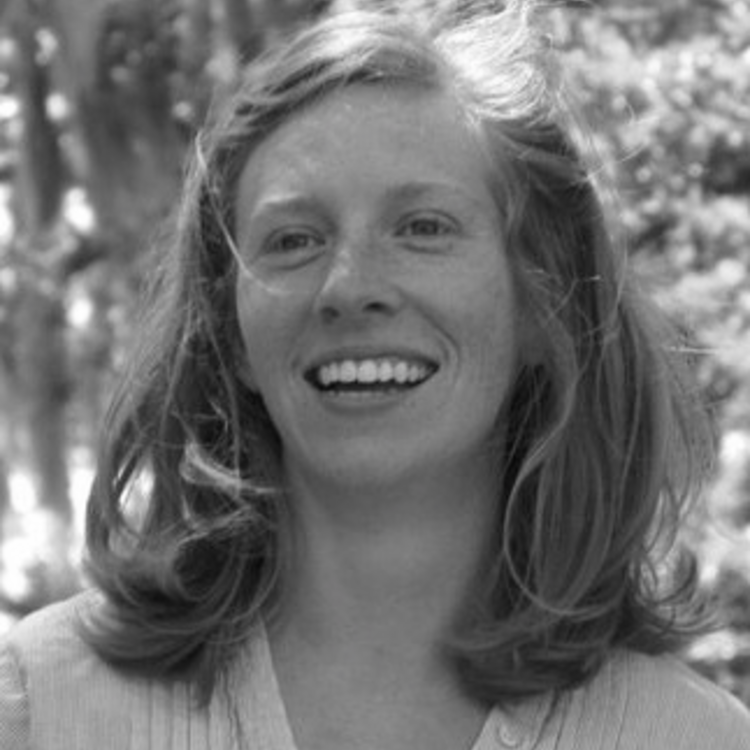
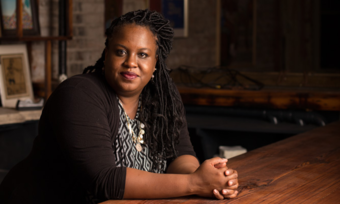


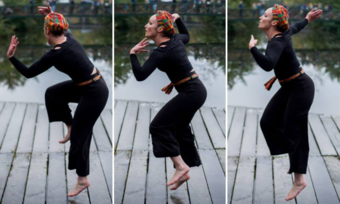
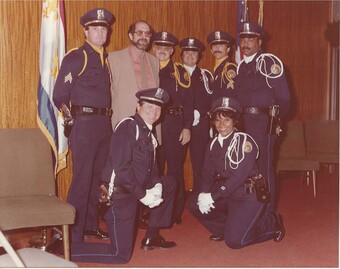

Comments
The article is just the start of the conversation—we want to know what you think about this subject, too! HowlRound is a space for knowledge-sharing, and we welcome spirited, thoughtful, and on-topic dialogue. Find our full comments policy here
Emilie, thanks for this article! I'm a New Orleans native who moved to Pittsburgh to study dramaturgy and is now living/working as a two-year fellow at Center Stage in Baltimore.
I attended the NET MicroFest you mentioned and was blown away by all of the exciting happenings back home. Opportunities like the fellowships offered by The Distillery are fantastic and very important. I'm so glad to see this initiative!
It leaves me wondering, though, what are the opportunities for New Orleans-based early career artists and arts practitioners? They may be there, but they lack visibility (and, oftentimes, pay). I think many young and/or early-career artists are leaving home as a result. For example, the majority of my NOCCA cohort left the city to attend university conservatory programs out of state; now that we're graduated, we are looking for--and not always finding--opportunities at home to work in the field. What's more, most of the artists I do see working in my world (theater) back home are transplants (who, I imagine, had the resources and/or established track records to be able to settle in NOLA and try to make things happen in terms of an arts career). While that's all well and good, I still wonder where our native New Orleanians are who are just starting out. I'd love to see a diverse ecology of arts and arts practice in New Orleans that doesn't suffer from brain drain or displacement. How can we retain, encourage, and support our local early-career (not necessarily young!) artists?
Do you have any thoughts on that? And, given this, are there any plans to extend fellowships to local early-career artists?
Eager to continue the conversation! Thanks!!
Hi Catherine -
I think there are some stellar organizations in New Orleans that are focused on fostering early career performing artists. In dance I think of Dancing Grounds www.dancingrounds.org, in theater I think of the open ensemble based training at Catapult with Mondo Bizarro www.mondobizarro.org, in film there is New Orleans Film Society www.neworleansfilmsociety.org and lord knows in music...you up and join one of the many jam sessions at a bar : ) I think the New Orleans Fringe Festival - happening every November with over 40 local individuals/companies joining 25 national and international artists -is a healthy catalyst for early career artists to mingle with mid-career artists. And then there is the "network" - the hub of activity proclaimed by leaders that will meet a new artist for a beer anytime and send introductory emails that help nestle the newer artist into the city. In such a grassroot-driven city I personally seeEm sparks fly for early career artists, and hold for a while... but they are grassroot. Supported by neighbors, a singular local business, one singular local grant, peer-to-peer mentorship. So your point brings up the important question of the expectations in fostering early career artists (and those expectations might relate to what mid-career local artist support looks like) Would be happy to speak with you more about how we've been navigating those waters - our contact info is on our website at www.neworleansdistillery.org. For now, DISTILLERY is entirely focused on mid-career artists and aims to provide an opportunity for local mid-career artists to hone their work locally before entering into larger national conversations. Hope to speak with you more! ~ Emilie Whelan
Emilie, thanks for this really very helpful information contextualizing support opportunities and DISTILLERY's reach. I'd like to second your point that the expectations of mentorship and support (whether for early- or mid-career artists and orgs) want parsing.
I'm going to shoot you an email now because I'd be thrilled to take this conversation out of the comments section and to an email exchange or phone call.
Thanks again, and talk soon!
Congratulations! This sounds like exactly what the doctor ordered. I created a 45-seat theater here in midtown Manhattan 9 years ago, and have been operating it on income from box office and rentals. It's not easy, but the quality of the work has been astounding. And it keeps getting better. A community of artists has developed - partly due to the various festivals i create and produce annually, in which developing work is given a chance to get on the stage. Now my rent has gotten too high - NYC is an expensive town to produce in, and the competition is beyond fierce for paying audience. I always have audience but I rely more than I want to on discount ticket services. This is across the board - Broadway, Off-Broadway and Off-Off Broadway, which is where my business is located and which is producing some of the most powerful and relevant theater in the city. Now I have my eye on Santa Fe, and I have been imagining doing there what I did here - except far more in the style of what you have described in this article. A creative residency, where playwrights and performing artists can make new work, without the relentless pressure of paying through the nose for rehearsal and performing space. I've done it by myself (with some donated time from friends) but would love to find help from the community. It's hard to build community in New York City, but New Orleans sounds like it has found the way to do it. I will be avidly watching what you are doing, would love to visit and see it in person, and will be thinking about what you're doing as I make plans to enter the next stage of my dramatic life.
Glad to hear that you are thinking about a creative residency as a tool for strengthening communities of performers. Our website is www.neworleansdistillery.org and our contact info is on the website - happy to speak with you about how we laid down the first bricks and mortar ~Emilie Whelan
Thanks, Emilie. I'll be in touch.
C